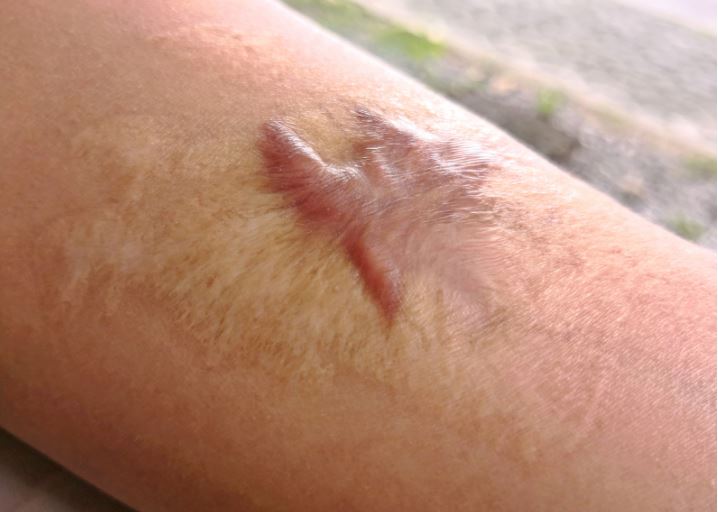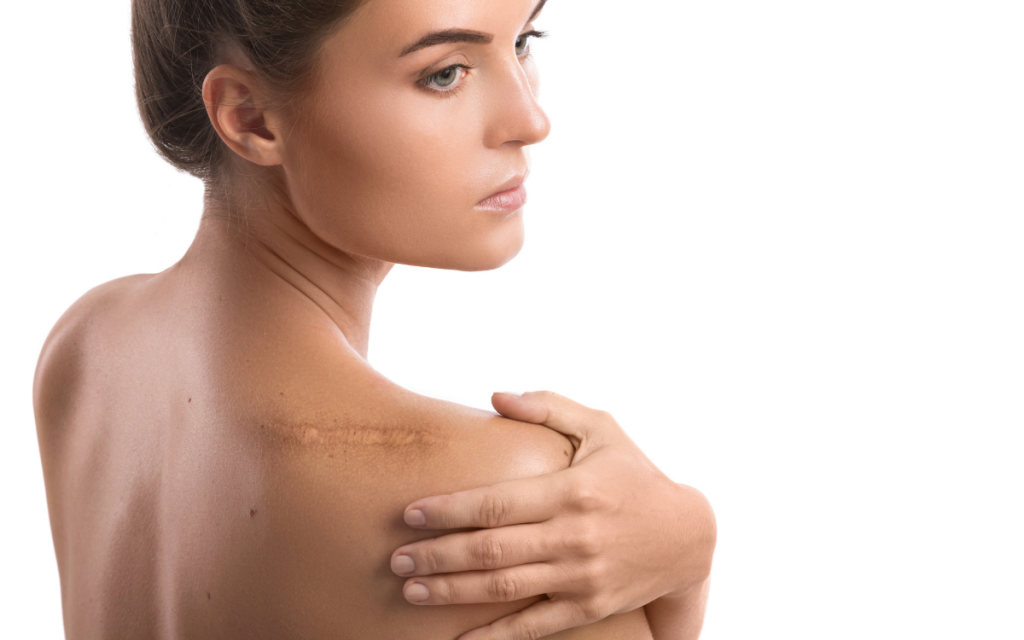Scars are like fingerprints: everyone has them but no two are alike. Some people scar so lightly that they can hardly be seen on their body, while still others can grow large angry looking scars, called keloids, from the smallest nick in the skin. Those who are prone to keloids are right to be cautious when it comes to cosmetic surgery. However, having keloids doesn’t automatically mean you have to rule it out. There are surgical techniques and methods of scar care that can go a long way toward minimizing scars.
Nevertheless, before you get too worried about potential keloids, it’s a good idea to first understand what a keloid is—that scar you think is a keloid might not even be one. Always tell your doctor about any unusual scars or growths on your body and be careful about self-diagnosis.
What is a keloid?

A keloid is more than just a large scar. A keloid is caused by an excess protein (collagen) in the skin during healing, as shown in the image below. Keloids are often quite a bit darker than the surrounding skin, they are raised, and they spread beyond the borders of the original incision or injury site. They can be painful, sensitive to touch, or itchy, and they tend to grow slowly over months or even years.
According to the American Academy of Dermatology, people with one or more of the following characteristics are more likely to develop keloids:
- Being of African, Asian, or Hispanic descent
- Having a Family history of keloids
- Being between 10 and 30 years of age
Even for those who are prone to them, keloids can be unpredictable. Not every scar develops into a keloid, and when they do, it can be from injuries large or small. They can arise from acne, burns or tattoos, and sometimes they grow for no clear reason. Some form after surgery, but not always. When it comes to surgical scars, there are things you and your surgeon can do to help prevent them from forming.

Preventing keloids
At Synergy Plastic Surgery, our board-certified plastic surgeons have extensive training in the minimization of scars and can help you prevent keloids. Whenever possible they hide incisions in skin folds and behind hair lines, and they also use special suturing techniques. Because a keloid is more likely to form when a scar is under tension, they will often use more than one layer of stitching and strips of tape to reinforce the incision.
After surgery it is important to follow your surgeon’s instructions and keep your wound dressings clean and dry. Keeping the wound free of infection is an important step in preventing keloids. As your incision heals, undue stress on the site can increase the likelihood that a keloid will form, so it is important to follow your surgeon’s movement precautions. Your surgeon may even give you a pressure garment to maintain pressure on the scar.
If you are prone to keloids, you may have more frequent follow up visits so your surgeon can closely monitor your scar as it develops. Treatments like corticosteroid injections, lasers, or silicone-based products can all be used to help treat keloids.
It is important to find a good board-certified plastic surgeon who can discuss these treatments and prevention strategies with you in person before you consider any kind of surgery. Keep in mind that even with all these precautions, keloids can still happen, in which case you will want a surgeon who has experience with scar revision.
At Synergy Plastic Surgery, our board certified plastic surgeons combined training and experience place them among the best plastic surgeons in Central Texas. If you have concerns about scarring, Synergy Plastic Surgery is here to help you understand your options and reach your aesthetic goals!
Schedule your complimentary consultation and unlock your Synergy Experience today!


Leave a Reply